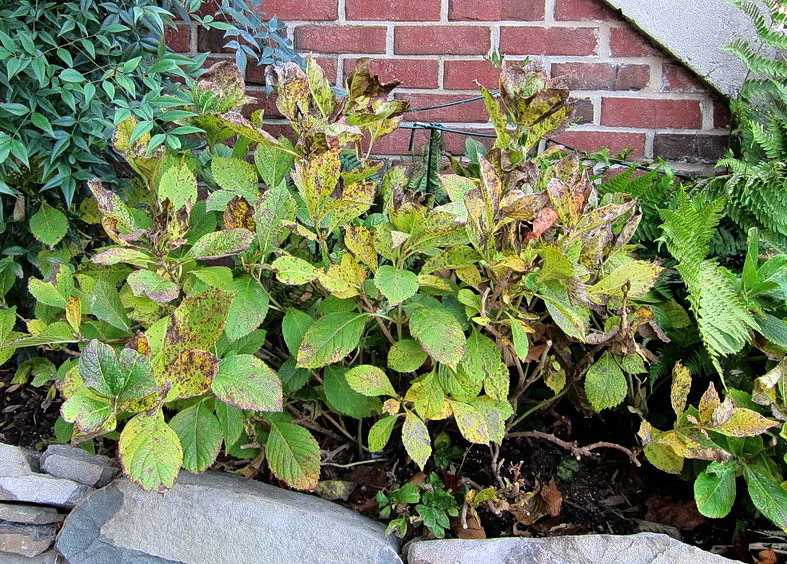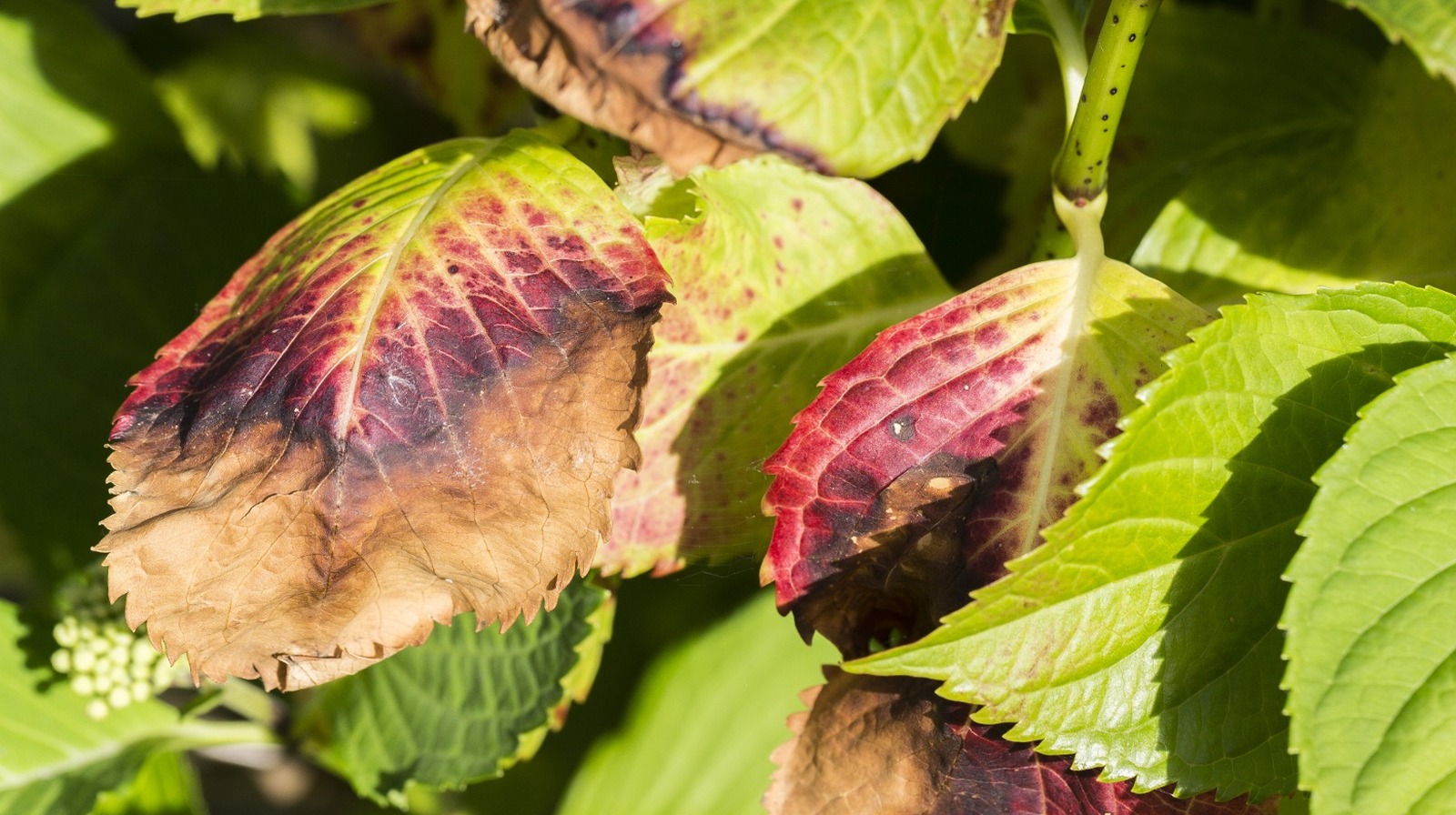Some Known Incorrect Statements About Hydrangea Leaves Turning Yellow
Table of ContentsSome Known Details About Hydrangea Leaves Turning Yellow The Facts About Hydrangea Leaves Turning Yellow UncoveredFacts About Hydrangea Leaves Turning Yellow RevealedAll About Hydrangea Leaves Turning YellowGet This Report on Hydrangea Leaves Turning YellowHydrangea Leaves Turning Yellow Can Be Fun For Everyone
You can attempt to avoid fungal illness by maintaining your gardens neat and free of debris. Offer your gardens an excellent autumn and spring tidy up and get rid of all fallen leave litter from the ground, in addition to from within the crown of the plant. These fallen leaves that will linger, waiting to assault in the following expanding period.Copper fungicides are, however if they are overused they can come to be poisonous to your plant. Clip the fallen leaves, and remove them from the yard.
If they aren't obtaining sufficient water, their fallen leaves will brown. Hydrangeas have a in the midday sun, and recuperating once the sunlight has actually moved and the plants have a long time to recover. If this happens repeatedly you may notice brown and crunchy leaves that are sagging. This is their means of letting us know that it requires some extra wetness.

Hydrangea Leaves Turning Yellow Can Be Fun For Everyone
If this is a reoccuring issue, you probably require to reassess your watering routine. Established plants might need to be watered one to 3 times per week, relying on your conditions. These bushes will do ideal with one inch of water per week. It may seem alluring to spray the fallen leaves down.
Water the base of the plant,. Once the plant has recoiled, you can return to a regular watering routine.
The container ought to be huge sufficient so the plant can expand and obtain all of the water and nutrients it needs. Panicles like the complete sun.
No matter of the range, plan in advance and make certain your plant has lots of defense from the wind. You might transplant to a new location, or you can create a wind barrier making use of an additional plant, or fencing.
The Ultimate Guide To Hydrangea Leaves Turning Yellow
Ornamental grass, Rose of Sharon, or Holly shrubs are simply a few concepts of plants you could use to block the wind. If you require to hair transplant, discover a spot in your yard that is well safeguarded from sunlight and wind. Hair transplanting is finest done in the autumn or the springtime.
The plants location is the most important element when it comes to getting established and correct growth. With a little forethought on growing place and appropriate maintenance, you'll be able to guarantee your hydrangeas!.
So, if Hydrangea leaves turn yellow and diminishes later on, it's typically due to overwatering, as the plant can not uptake water and loses the leaves to remove transpiration. Following this, Hydrangea leaves begin to sag and shrivel. Given that both problems can establish yellow fallen leaves, you need to detect the difference between the overwatered and underwatered plant.
Nevertheless, you can additional info save the plant from yellow fallen leaves by supplying it the correct light and positioning. If your plant gets yellow leaves, relocate it to a dark area. Place Hydrangea plants inside near an east-facing home window. Dapple the plant with drapes or UV protection sheets to block direct heat.
Getting My Hydrangea Leaves Turning Yellow To Work
Bear in mind, Hydrangeas are only frost forgiving in autumn and winter months as they go inactive, and temperature modifications can create yellowing leaves and brownish places. If it gets too warm, the edges of the leaves end up being yellow, turn brown and develop a crispy appearance. Move your potted Hydrangeas away from breezy north-facing home windows in the winter season.
Hefty dirt can quickly obstruct the oxygen supply to the roots and sever the connection with the upper parts of the plant (leaves). Hydrangea leaves change their color if they locate small troubles in the dirt make-up. This problem can trigger the Hydrangea delegates transform yellow, deal with leaf decreases, and make a saggy plant in sync with overwatering.
Yellow fallen leaves in Hydrangeas are the initial signs of condition problem, often followed by black areas, browning, goes down, and wilting. Separate the unhealthy or pest-infested plant from the healthy and balanced plants to prevent illness spread. If it is a yard plant, remove all the contaminated leaves using disinfected devices and tidy up all the particles.
So, removing helps Hydrangea shade unneeded weight and insurance coverage, permitting the development of brand-new fallen leaves. The ideal time to prune Hydrangeas is springtime when the plant prepares to look at here now grow vegetation for the next season. Examine for spent or diseased leaves and cut the base of a stalk that joins the fallen leaves and stem.
6 Easy Facts About Hydrangea Leaves Turning Yellow Shown
Prevent reducing healthy and balanced or environment-friendly leaves, and do not eliminate even more than 25% of the plant's vegetation. The main reason behind the red fallen leaves in Hydrangea is inadequate soil or ecological problems.
Repot the plant each year in springtime or every 2 years if the growth rate is sluggish (Hydrangea Leaves Turning Yellow).
There are six major reasons this could take place:: The plant does not get adequate sunlight.: The origins are either too wet or also dry.: The plant is too cold.: The soil is not acidic or alkaline enough for the hydrangea.: The plant isn't obtaining the ideal nutrients it requires to stay healthy.
Each factor influences the plant in a method that can be taken care of if we recognize how to care for hydrangeas the ideal way. When we talk about inadequate light for hydrangeas, we suggest that the plant isn't getting sufficient sunshine.
The Definitive Guide for Hydrangea Leaves Turning Yellow
Without enough sunlight, the fallen leaves can transform yellow, the plant can end up being weak, and it may produce fewer blooms. To make certain a hydrangea gets sufficient light, it needs to be placed in a spot where it can enjoy the morning light and be protected from the intense afternoon sunlight. Hydrangea Leaves Turning Yellow. Overwatering is when a hydrangea plant obtains more water than it requires

This issue is usual go right here in the loss as the climate changes or if a hydrangea is grown in a spot where it doesn't get enough heat from the sun. It is very important to understand the ideal problems for hydrangeas to prevent low-temperature anxiety. As an example, a lot of hydrangeas expand finest in zones 6 to 9, where the climate is milder.

Comments on “The Ultimate Guide To Hydrangea Leaves Turning Yellow”